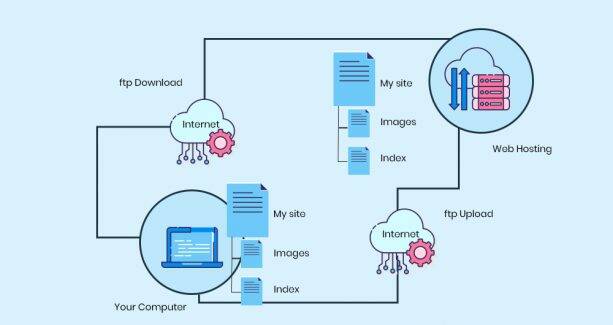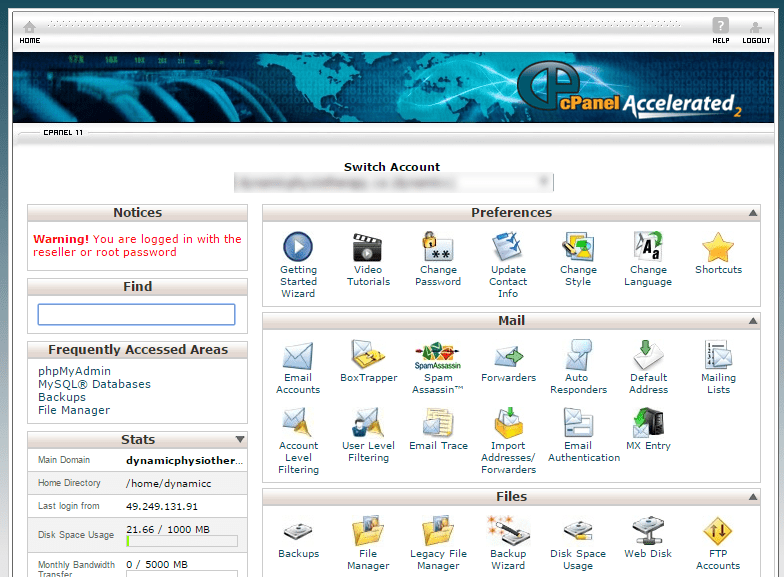As a project manager at a website development company, I often run around in circles when trying to track down a clients’ hosting information. The purpose of this blog is to help out those who are unfamiliar with the terminology of website hosting.
What are FTP Logins?

Also on TechWyse:
The Rise In Popularity Of CPanel In Shared Hosting
How To Change Domains Without Hurting Your Rankings
FTP stands for File Transfer Protocol. This is a tool used to transfer, upload, and download files in your hosting environment. Your FTP information holds the files of your website (not to be confused with your database). In order to login to your FTP, you must have all of the following:
- Host
- Username
- Password
If you don't know how to obtain your FTP information, contact your hosting company (for example: Godaddy.com, Hostgator.com) and they can help you with this request.
What are Control Panel Logins?
A hosting control panel is an easy to use, web-based interface that is provided by your hosting company (for example: Godaddy.com, Hostgator.com, etc.) that allows users to manage their hosting services in one single location. This is essentially the control centre of your website. Even your website files (FTP) are stored within the hosting control panel! Here are some other modules that are available to use within your Control Panel (in most cases):
- Adding and configuring email accounts associated with your domain. For example: joe@mycompany.com
- Access and management of your websites database, which are the data and information on your website
- Creating FTP accounts/logins (you can create more than one FTP for your website and different access levels)
- The details of how much bandwidth and space is available/used within your hosting account (if you exceed either, your website will go down)
- Server log information, such as who logged in last to your FTP and from what IP, when emails were sent, etc.
- Access to website statics on visitor behaviour (a simple form of Google Analytics in other words)
- Web-based file manager (access to FTP through the control panel rather than using an FTP program)
What is a Domain Registrar?
A domain registrar is an online store where you can go to purchase your domain. You can only purchase a domain that is not owned by anyone else. For example, I work at TechWyse, which means back in 2001, the owner of TechWyse, DJ Kennedy, went online, found a domain registrar, searched to see if: www.techwise.com was available...it wasn't; however, www.techwyse.com was available! Hence the spelling of TechWyse with a “Y”!
With that being said, here are some well-known domain registrars:
Once you have purchased a domain, uploaded your website files through your FTP, configured your database through your control panel, you are ready to point your domain and tell the World Wide Web where they can find your website if they type in your URL (aka domain and website address). You will login to your domain registrar and point what is called your nameservers, also referred to as DNS - domain name system. You will hear both terms used. Likely, you are wondering the same question I get from my clients "how do I know what my nameservers are?”. That's easy! You just call your hosting company and ask. They will provide you with these information, then you can go to your domain registrar and point them and Voila. Once the DNS propagates (because this is not an instant thing it can take anywhere from immediately to 48 hours), your website will be accessible via your domain!
A couple of extra notes to ensure you aren't confused:
- You can buy your domain and hosting (FTP and Control Panel) from the same company, but it doesn't have to be the same company!
- FTP and Control panel details are both within your hosting account, which are through the same company!
- You can have your emails and website hosted at a different location, but this would require learning a little more about domain registration…EEK!
How can I host my email and website in different locations?
Above, I explained how you point your nameservers (DNS) to your host, if you decide to host them in different locations, then you will have to go into the advanced section of the domain registrar. Rather than pointing name servers, you are going to point an A record for your website. This information you can also get from your host, it is simply an IP address. Then, you would point an MX Record to where you are hosting your email. This information is a bit more detailed, you would call your email hosting company or your IT person to obtain this information.
Well, that about does it! That was your first lesson in hosting. Confused? Well, that's why you have blogs like this to help guide you through all of your hosting and domain needs! Until next time...oh AND, there is one more set of logins you can have to your website. These are called your website login details. This will refer to the backend of your website. For example, if your website is built using a CMS (content management system) like Wordpress, Joomla, etc. you would have a url, username and password...I think I will save that information for the next blog on content management systems.
See ya!

on
Thank Britt! This is some great information.
on
Good to know, thanks!!